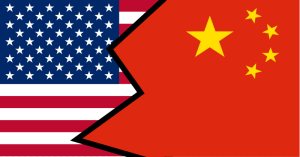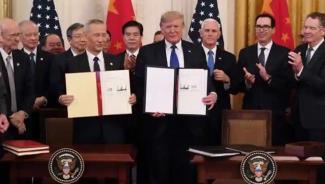 Agricultural commodities represent 22 percent of the products covered in the January 2020 Phase-One trade agreement with China. Despite optimistic projections by the office of the U.S. Trade Representative, actual deliveries of commodities have fallen short of the commitment entered into by China. Orders lagged through the 2019-2020 marketing year although there has been an increase through September and into the subsequent market year. It is calculated that China will need to import 62 percent of their commitment during the fourth quarter of the current year to comply with the 2020 target.
Agricultural commodities represent 22 percent of the products covered in the January 2020 Phase-One trade agreement with China. Despite optimistic projections by the office of the U.S. Trade Representative, actual deliveries of commodities have fallen short of the commitment entered into by China. Orders lagged through the 2019-2020 marketing year although there has been an increase through September and into the subsequent market year. It is calculated that China will need to import 62 percent of their commitment during the fourth quarter of the current year to comply with the 2020 target.
 Soybeans comprised 60 percent of U.S. agricultural exports to China in 2017. Following the initiation of the trade conflict, China turned to other suppliers of soybeans resulting in U.S. exports through September 2020 attaining half of pre-2018 levels. An added complication was the reduced demand by China following the loss of up to 30 percent of their hog herd as a result of African swine fever. Although China requires corn and is now importing this commodity the impetus is partly a result of a 2019 World Trade Organization ruling concerning unfilled tariff rate quotas. Despite the requirement for imported corn China turned to other suppliers than the U.S.
Soybeans comprised 60 percent of U.S. agricultural exports to China in 2017. Following the initiation of the trade conflict, China turned to other suppliers of soybeans resulting in U.S. exports through September 2020 attaining half of pre-2018 levels. An added complication was the reduced demand by China following the loss of up to 30 percent of their hog herd as a result of African swine fever. Although China requires corn and is now importing this commodity the impetus is partly a result of a 2019 World Trade Organization ruling concerning unfilled tariff rate quotas. Despite the requirement for imported corn China turned to other suppliers than the U.S.
 The trend in exports of both industrial goods and agricultural commodities from 2018 onwards suggests that trade wars are not “short and easily won”. Tariffs on imported goods are borne by consumers not the exporting nation. Federal subsidies to the agricultural sector in 2019 and 2020 to compensate for losses in exports were effectively at the expense of taxpayers, adding to the national debt.
The trend in exports of both industrial goods and agricultural commodities from 2018 onwards suggests that trade wars are not “short and easily won”. Tariffs on imported goods are borne by consumers not the exporting nation. Federal subsidies to the agricultural sector in 2019 and 2020 to compensate for losses in exports were effectively at the expense of taxpayers, adding to the national debt.
Trade disputes with nations such as China should be resolved by negotiation and the use of international agencies such as the WTO rather than embarking on self-destructive tariff wars that invite retaliation. Confronting the World’s second largest economy should not have involved a precipitous head-on confrontation in 2017. Resolution of real grievances could be achieved more easily through cooperation and collaborative action with our erstwhile allies who are faced with similar problems of China extending subsidies to state-owned enterprises, coercive trade practices and theft of intellectual property.